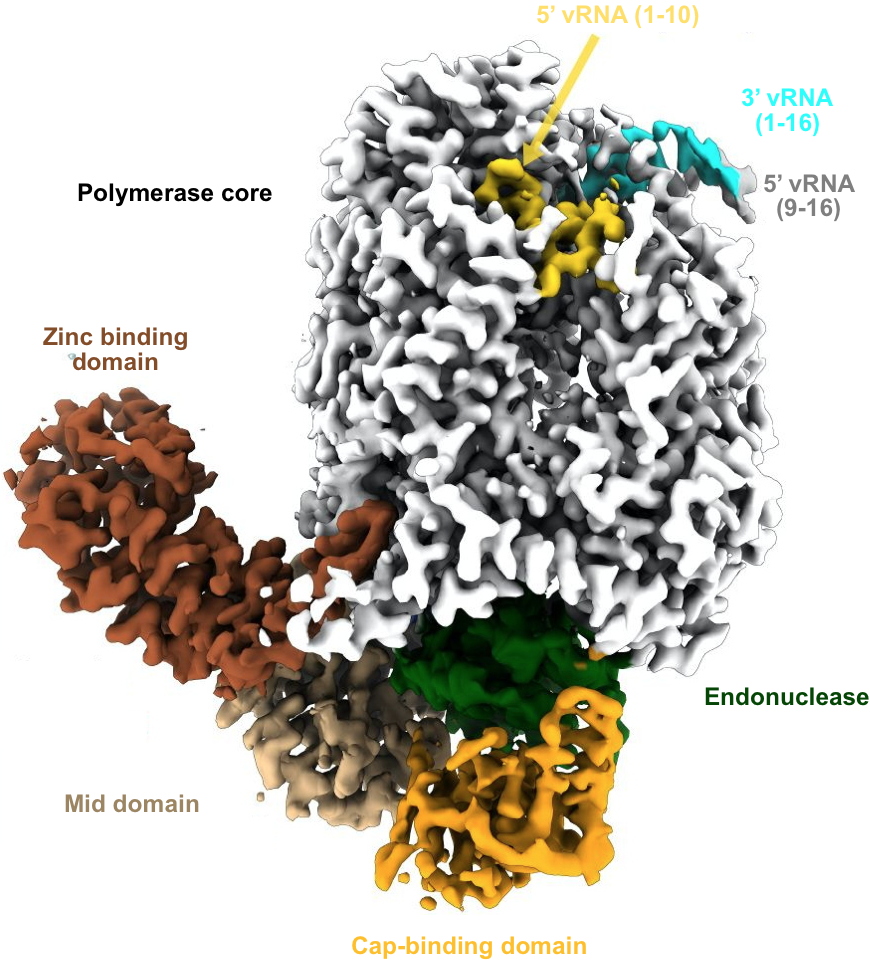Bunyavirales is an order of
segmented negative-strand RNA viruses (sNSV) ccomprising several life-threatening human pathogens for which there is currently no treatment (La Crosse virus, Hantaan virus, Crimean Congo virus, Lassa virus). The replication and transcription of their genome are essential steps of their viral cycle and are catalyzed by a key viral enzyme: the RNA-dependent RNA polymerase. Although the overall mechanism of transcriptional initiation is likely to be retained between sNSVs, several elements suggest some divergence between viral families. To understand the detailed mechanisms of replication and transcription, the full polymerase structures captured at different stages of these processes are essential.
Researchers at IRIG, in collaboration with Dr. Cusack’s group at EMBL Grenoble, describes here the structure of the complete RNA-polymerase of the
La Crosse virus obtained at 3 Å resolution by cryo-electron microscopy, using data collected on the Glacios cryo-microscopes from IBS and Krios from ESRF. This structure reveals the position and organization of the C-terminal part of the RNA polymerase which includes a cap-binding domain necessary for transcription initiation. Two states could be visualized, pre-initiation and elongation. In particular, this allows to highlight the conformational changes necessary for the formation of a double-stranded 10-base pair RNA in the active site cavity during elongation.
The structural details and dynamics of the functional elements identified provide a mechanistic overview of the transcription of bunyaviruses that allows us to understand the functioning of this enzyme. This work provides a solid basis for the future design of inhibitors targeting RNA polymerase.
Segmented negative-strand RNA viruses (sNSV): virus with a genome divided into several segments. Unlike the human genome, which is made up of double-stranded DNA, the genome segments of these viruses are made up of single-stranded RNAs. These RNAs have negative polarity which means that they can be used directly as templates by the RNA polymerase for the synthesis of positive polarity messenger RNAs during transcription.
La Crosse encephalitis is a viral disease transmitted to humans through the bite of a mosquito. Although many infected people have no apparent symptoms, some develop severe neuro-invasive disease. Severe illness often involves encephalitis and can include seizures, coma and paralysis. Severe illness occurs most often in children under 16 years of age.

Three-dimensional structure of La Crosse virus RNA polymerase.